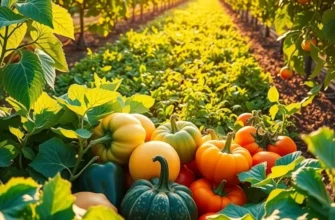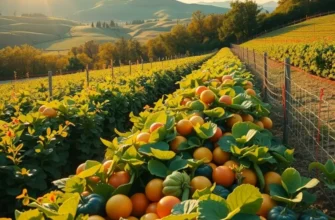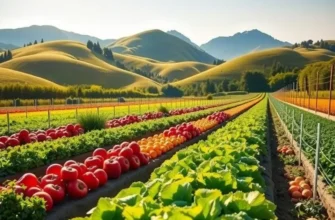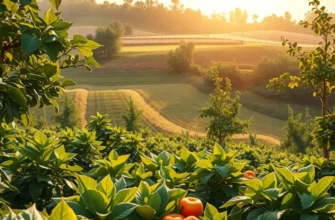Embracing local food sources is synonymous with caring for the environment and fortifying our communities. By opting for local produce, we can significantly reduce carbon footprints, enhance biodiversity, and support small farmers who prioritize sustainable practices. In doing so, we foster a healthier ecosystem while enjoying fresher, tastier food. Let’s explore the benefits of eating local and how this conscious choice contributes to a flourishing planet.
The Ecological Benefits of Local Eating
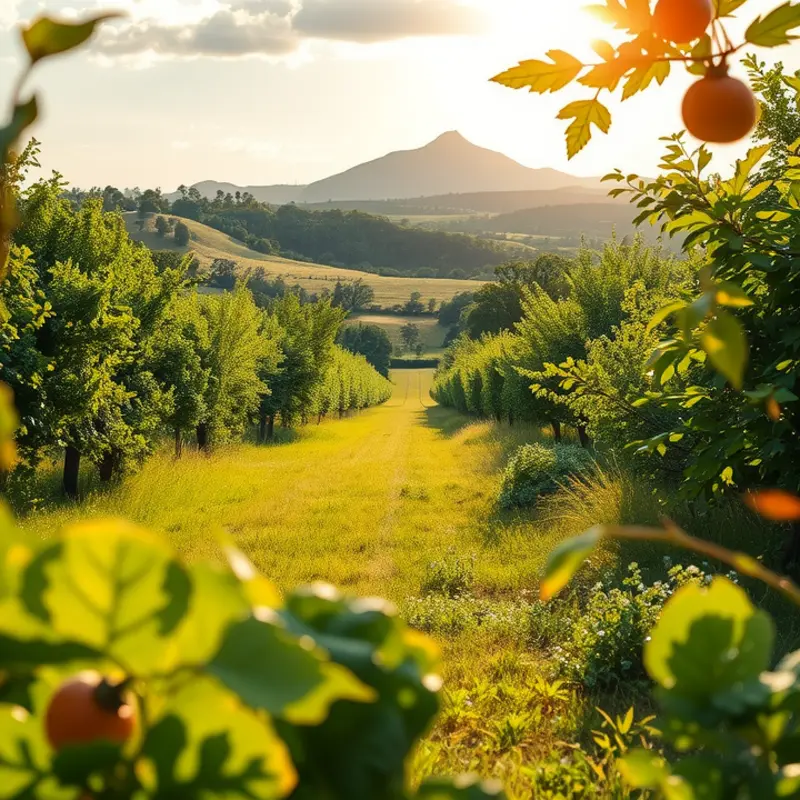
Choosing locally sourced food helps to significantly reduce carbon emissions. Locally grown produce requires less transportation, which directly cuts down on fossil fuel usage. According to a study published by the American Journal of Agricultural Economics, food items on average travel over 1,500 miles from farm to plate, generating substantial greenhouse gases. By purchasing local products, this distance is drastically shortened, meaning fewer emissions pollute our atmosphere.
Water usage is another area where local farming shows its strengths. Large industrial farms often rely on extensive irrigation systems that strain local water resources. Conversely, many local farms tend to use more conservative watering methods, including rainwater harvesting and drip irrigation, to maximize efficiency. These practices help conserve one of our most vital resources and ensure sustainable use over time.
Biodiversity preservation is another crucial benefit of supporting local agriculture. Industrial farms often focus on monoculture, growing one type of crop extensively. This practice weakens soil quality over time and reduces the variety of life in the ecosystem. Local farms, however, frequently practice crop rotation and intercropping, which foster a naturally rich and varied environment. Reports from the United Nations Food and Agriculture Organization highlight that small-scale farms tend to maintain a higher level of biodiversity, which strengthens ecosystems’ resilience against pests and diseases.
Furthermore, pesticide and fertilizer usage is generally lower in local farming operations, contributing to healthier ecosystems. The Environmental Working Group found that smaller farms are likelier to employ organic or less intensive agricultural practices, which leads to healthier soil, cleaner water, and a lesser impact on wildlife.
For consumers looking to support local agriculture, farm-to-table markets, food co-ops, and Community Supported Agriculture (CSA) boxes are excellent starting points. Farmers’ markets provide seasonal produce directly from local farmers. Food labels can also be a good indicator; look for tags indicating locality or origin. Additionally, online resources such as farm directories can help consumers find nearby suppliers.
Incorporating locally sourced food into your diet doesn’t have to be a massive lifestyle change. Begin by identifying a few seasonal products available at your local farmers’ market. Even minor adjustments, like swapping imported fruits for local veggies, can make a significant difference. For those interested in low-waste cooking practices to further reduce environmental impact, explore tips and strategies at Low Waste Cooking and Prep. By choosing local, consumers can actively participate in building a sustainable future for our planet.
Empowering Local Farmers and Communities
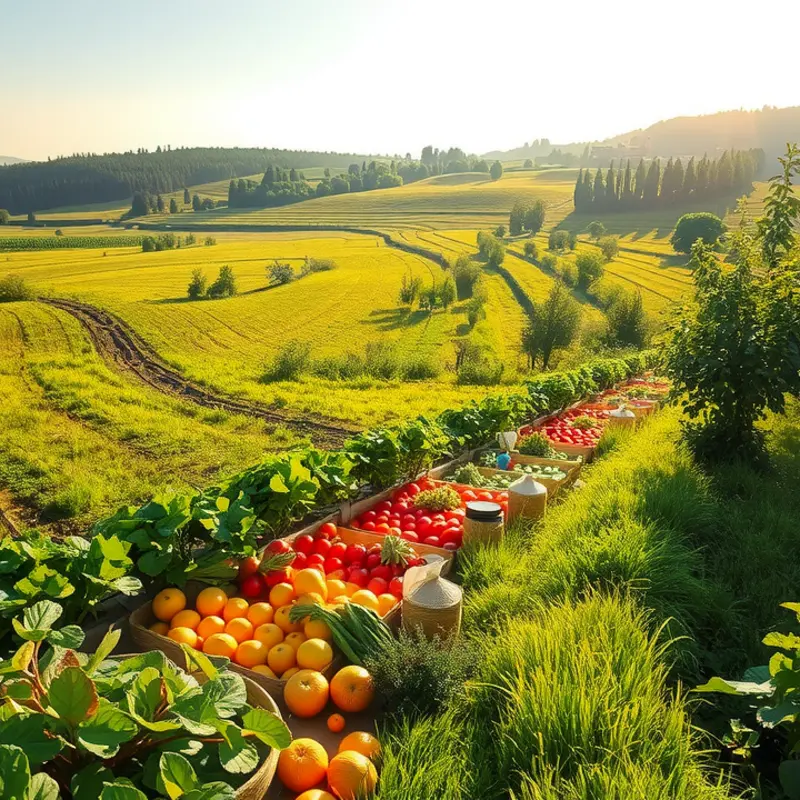
Buying from local farmers enhances their ability to thrive while fostering strong community ties. Local food systems offer a transparency in food sourcing that is often missing in globalized supply chains. Knowing where and how food is grown connects consumers to their community, creating a unique bond from field to table.
Local farmers markets and CSA programs are central to building these connections. Farmers markets serve not only as a venue for fresh produce but also as a vibrant social gathering. They encourage direct interaction between growers and consumers, allowing for discussions about food production practices and sustainable agriculture. CSA programs deepen these relationships by providing a more personalized connection to the farm. Through CSA, members receive shares of the harvest, aligning their food needs with the farmer’s growing cycle.
Understanding the origin of our food helps create a sense of accountability and respect for agricultural work. It sparks a recognition of the hard work and dedication required to produce quality food sustainably. Communities that understand the significance of supporting local farms tend to prioritize investments in local economies, enhancing resilience against external economic fluctuations.
To engage more directly with local food systems, individuals can take several actionable steps:
-
Visit Farmers Markets Regularly: By routinely attending these markets, you can build rapport with vendors and learn more about their farming techniques.
-
Join a CSA Program: Consider investing in a CSA. This not only provides fresh produce but also supports the operational costs for farmers, ensuring they can maintain sustainable practices.
-
Start or Join a Food Cooperative: Cooperatives pool resources for better bulk purchasing power, providing members with fresh, local produce. They also distribute profits among member-owners.
-
Volunteer at Community Gardens: Participating in community gardening workshops can expand your knowledge of local crops and sustainable growing methods.
Communities have shown remarkable success through local food initiatives. For instance, urban farming movements in several cities have transformed vacant lots into food-producing areas, addressing food deserts and empowering neighborhoods. Initiatives like neighborhood garden swaps encourage sharing of excess harvest, minimizing food waste while reinforcing community bonds.
Consider exploring eco-smart kitchen storage to complement your local food choices. Proper storage techniques can extend the longevity of fresh produce, allowing you to make the most of your local purchases.
By supporting local farmers and engaging with community-oriented food systems, we contribute immensely to the sustainability and vibrancy of our immediate environment, simultaneously nourishing our planet and fortifying community resilience.
Final words
Choosing to eat local is more than just a personal choice; it’s a powerful act that benefits the planet, community, and economy. By supporting local farmers, we contribute to a sustainable food system that promotes environmental health and community resilience. Make a conscious effort to integrate local products into your meals, from farm-fresh vegetables to artisanal bread. Remember, every local purchase is a vote for eco-friendliness, community empowerment, and a nourishing future for our planet. Together, we can cultivate a more sustainable world, one plate at a time.



